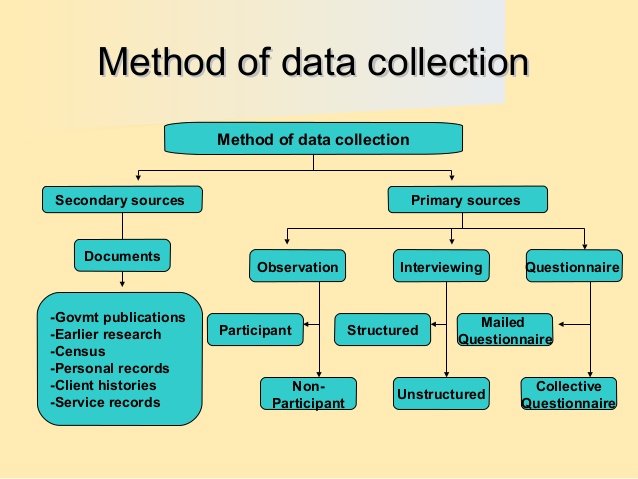Quantitative data collection methods typically use standardized response categories. Surveys are the most common example. Respondents are asked to choose among responses that best characterize their perceptions, attitudes, knowledge, or opinions. The advantage of quantitative data is that it efficiently measures the reactions of many people which facilitates statistical aggregation of the data, including making comparisons by subgroups. Using sound sampling procedures to represent the population and obtaining adequate response rates are critical. Provided your sample size is large enough, and your methods and analysis are sound, this method of data collection provides a broad, generalizable set of findings. This means that they can be used to learn about the entire population that you are studying.
By contrast, qualitative data collection methods typically produce detailed data about a much smaller number of people. Qualitative data can provide rich information through direct quotation and careful description of programs, events, people, interactions, and observed behaviors. The advantage and disadvantage of such descriptions, quotations, and case studies is that they are collected as open-ended narratives. Observations are not fit to categories so rigorous and systematic analysis of content can be tedious and time-consuming.
One of the most common qualitative data collection techniques is the interview which may be with individuals or a group. In a group interview, or focus group, a moderator conducts a discussion among five to ten people in order to learn their opinions, attitudes, and thought processes about a given topic. The group dynamic encourages a deeper level of discussion and allows the moderator to probe for topics that are important. Note that the term focus group is often misused to refer to any meeting of any group of people about a given topic. In actuality, focus groups as well as individual interviews, are systemically structured and discussion is carefully guided to allow for drawing conclusions and making comparisons. Qualitative data can also be collected from written sources such as journals, open-ended survey questions, and reaction sheets completed by observers or participants.
An ethnographic approach to evaluation collects qualitative data. Maribel Alvarez describes in her case study, Two-Way Mirror: Ethnography as a Way to Assess Civic Impact of Arts-based Engagement in Tucson, AZ, that ethnographic evaluation emphasizes listening carefully and observing real-life actions to understand how people make sense of their lives. An ethnographic evaluation produces “data collection” of a distinct kind subjective accounts of how people actually interact with systems, programs, and policies. This data is collected through experiences of the evaluator in the field, side by side with participants.
Data Collection
Data collection is a process of collecting information from all the relevant sources to find answers to the research problem, test the hypothesis and evaluate the outcomes. Data collection methods can be divided into two categories: secondary methods of data collection and primary methods of data collection.
Methods of data collection for primary and secondary Data

(1) Primary data
Primary data are original observations collected by the researcher or his agent for the first time for any investigation and used by them in the statistical analysis.
The primary data is the one type of important data. It is collection of data from first hand information.
This information published by one organization for some purposes. This type of primary data is mostly pure and original data.
The primary data collection is having three different data collection methods are:-
- Data Collection through Investigation:
In this method, trained investigators are working as employees for collecting the data. The researchers will use the tools like interview and collect the information from the individual persons.
- Personal Investigation Methods:
The researchers or the data collectors will conduct the survey and hence they collect the data. In this method we have to collect more accurate data and original data. This method is useful for small data collection only not big collection of data projects.
- Data Collection through Telephones:
The data researcher uses the tools like telephones, mobile phones to collect the information or data. This is accurate and very quick process for data collection. But information collected is not accurate and true.
(2) Secondary data
The secondary data is the other type of data, which is collection of data from second hand information. This information is known as, given data is already collected from any one persons for some purpose, and it has available for the present issues. And mostly these secondary data’s are not relevant and pure or original data
Two important methods:
a) Official methods:
Data collecting from the ministry of finance, Agriculture, Industry and etc. These data collection methods are official methods. This methods are used the tools of phone calls and surveys.
b) Semi–official methods:
This is the method of data collection from Railway boards, banks, population committee etc. This methods only used for the focusing groups, and interviews, and electronic mail surveys.
Ways of Collections
In this case the data’s are already available, it means the data’s are already collected and analyzed by someone else. It can be either published or unpublished data. When using the secondary data, the following characteristics must be followed:
- Reliability
- Suitability
- Adequate data
These data’s can be collected from the following places:
a) Official
b) Newspapers and journals
c) Research organizations like universities.
Secondary sources are data that already exist
- Previous research
- Official statistics
- Mass media products
- Diaries
- Letters
- Government reports
- Web information
- Historical data and information
2 thoughts on “Methods used for collection of different Data Types”